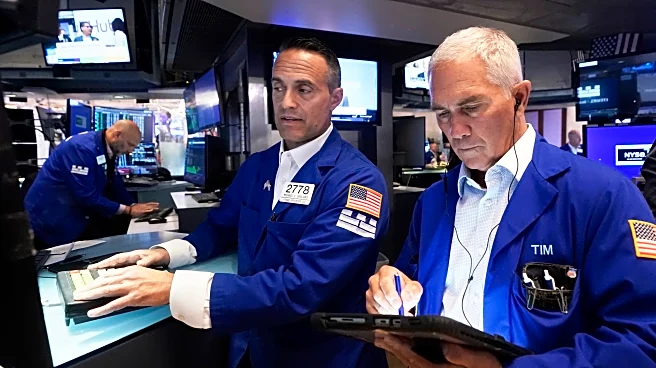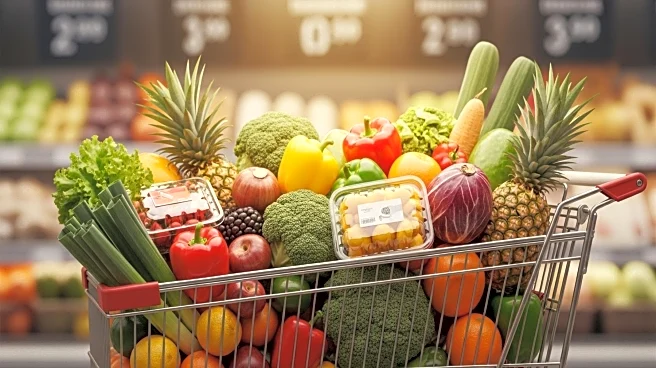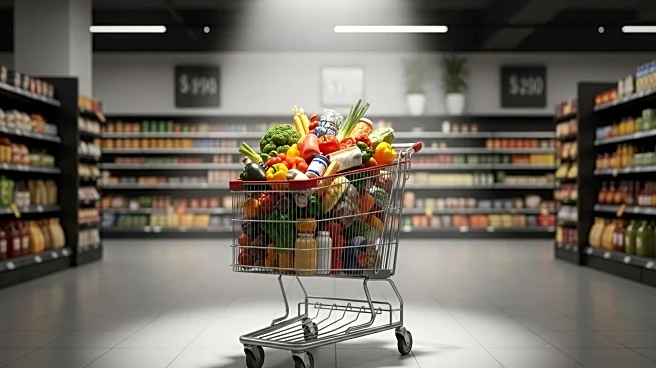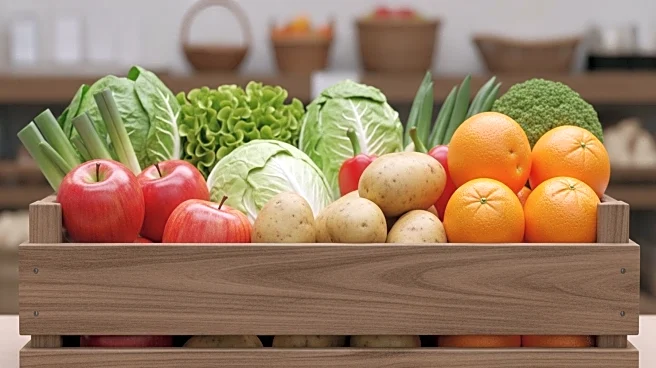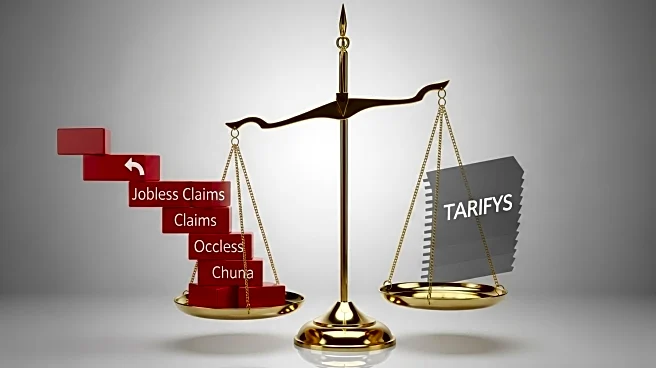What is the story about?
What's Happening?
Grocery prices in the United States have risen at their fastest pace in three years, influenced by President Trump's tariffs, immigration policies, and climate change impacts. The Bureau of Labor Statistics reported a 0.6% increase in food prices in August, with a 2.7% rise over the past year. These increases are attributed to tariffs on imported goods, labor shortages due to immigration crackdowns, and climate-related disruptions in food production. The rising costs are affecting low- and middle-income households the most, prompting changes in shopping habits and increased reliance on private label products.
Why It's Important?
The rising grocery prices have significant implications for American consumers, particularly those in lower income brackets who are most affected by cost increases. The situation highlights the interconnectedness of trade policies, labor markets, and environmental factors in shaping economic conditions. For policymakers, addressing these challenges requires balancing trade and immigration policies with domestic economic needs. The impact on consumer behavior and spending patterns could also influence broader economic trends and political dynamics, as food prices are a critical concern for many voters.
What's Next?
As grocery prices continue to rise, there may be increased pressure on the government to adjust tariffs and immigration policies to alleviate economic strain. Retailers and food producers might also explore strategies to mitigate costs and maintain consumer loyalty. The ongoing economic challenges could influence future policy decisions and electoral outcomes, as voters seek solutions to affordability issues.
AI Generated Content
Do you find this article useful?



